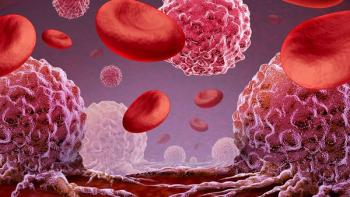
SBRT Reduces Side Effects, Treatment Visits in Pancreatic Cancer
Patients with pancreatic cancer who underwent stereotactic body radiation tended to have fewer side effects and treatment sessions compared to those who had intensity-modulated radiation therapy.
Stereotactic body radiation therapy (SBRT) led to fewer side effects than intensity-modulated radiation therapy (IMRT) for patients with locally advanced pancreatic cancer, according to research presented at the
According to the findings, the two types of radiation had similar results when it came to how much they shrunk or controlled tumors before patients were treated with gemcitabine. Of note, the goal of radiation therapy in this setting is to improve the effectiveness of chemotherapy treatment.
However, the researchers also observed that there were fewer patient in the SBRT group stopped treatment due to clinical deterioration, or experienced side effects — including gastrointestinal side effects — during the two-week period after they underwent their final radiation dosing.
SBRT results in fewer side effects because it delivers radiation in a more focalized manner, aiming directly at the tumor and enlarged lymph nodes surrounding it (if any), explained study author Dr. Karyn A. Goodman, professor and vice chair for Research and Quality in the Department of Radiation at the Icahn School of Medicine at Mount Sinai.
Additionally, Goodman added, the course of treatment with SBRT is shorter than that of IMRT, minimizing hospital visits for treatment, which could be particularly attractive for this group of patients with pancreatic cancer, as therapy for the disease often lasts for months.
Transcript
I think for patients with pancreas cancer, SBRT is a really nice option because it minimizes the amount of time patients have to be in the hospital for their radiation; it's only five treatments usually given over about two weeks.
Because (SBRT is) a very focal radiation delivery process, where we're only treating really the primary tumor and maybe some adjacent nodes that are enlarged, rather than a larger field that we use for the standard chemo radiation, that it is very well tolerated, and patients have minimal toxicity from the treatment. So, this is a really nice option.
When we're treating patients with locally advanced pancreas cancer, who are undergoing many months of therapy with chemotherapy with this intraarterial therapy to limit the number of times they have to come in for radiation.
For more news on cancer updates, research and education, don’t forget to





